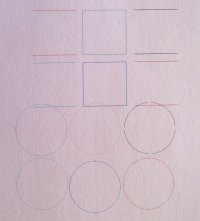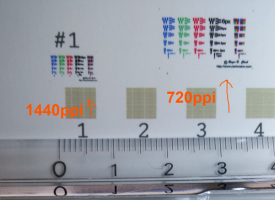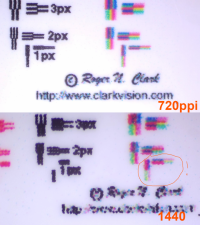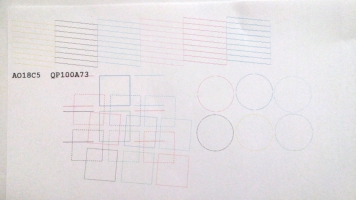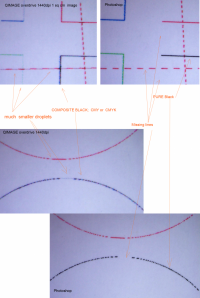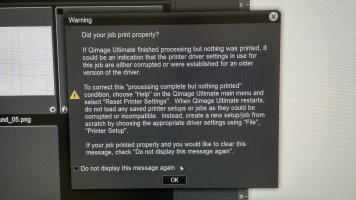Gubenco
Printing Apprentice
- Joined
- Sep 1, 2021
- Messages
- 25
- Reaction score
- 1
- Points
- 15
- Printer Model
- Epson1500w
Hello, I am trying to print at maximum resolution with an Epson Stylus 1500w.
There is some missing lines (both y and x) to the squares and circles. With circle is even more interesting because it looks thicker in some parts where usually the detail is missing. It seems like there is a sort of moire effect where my 1440 ppi image meets a "non 1440dpi printer pattern". Diagonals look ok.
The effect is present on both Y and X axis with the same amount. They say there should be 5760 ppi on X axis I see nothing like this.
If I print 720ppi images there is no problem and dots are placed quite even.
I am sending 1440ppi aliased images to the printer and I have tried different setups all at highest resolution. I am curious if this is a known artifact or my printer is damaged. All nozzles look clean but the printer is not new. It is using an aftermarket CISS (it was installed by the vendor). I am using INK master dye inks.
Regards
There is some missing lines (both y and x) to the squares and circles. With circle is even more interesting because it looks thicker in some parts where usually the detail is missing. It seems like there is a sort of moire effect where my 1440 ppi image meets a "non 1440dpi printer pattern". Diagonals look ok.
The effect is present on both Y and X axis with the same amount. They say there should be 5760 ppi on X axis I see nothing like this.
If I print 720ppi images there is no problem and dots are placed quite even.
I am sending 1440ppi aliased images to the printer and I have tried different setups all at highest resolution. I am curious if this is a known artifact or my printer is damaged. All nozzles look clean but the printer is not new. It is using an aftermarket CISS (it was installed by the vendor). I am using INK master dye inks.
Regards

